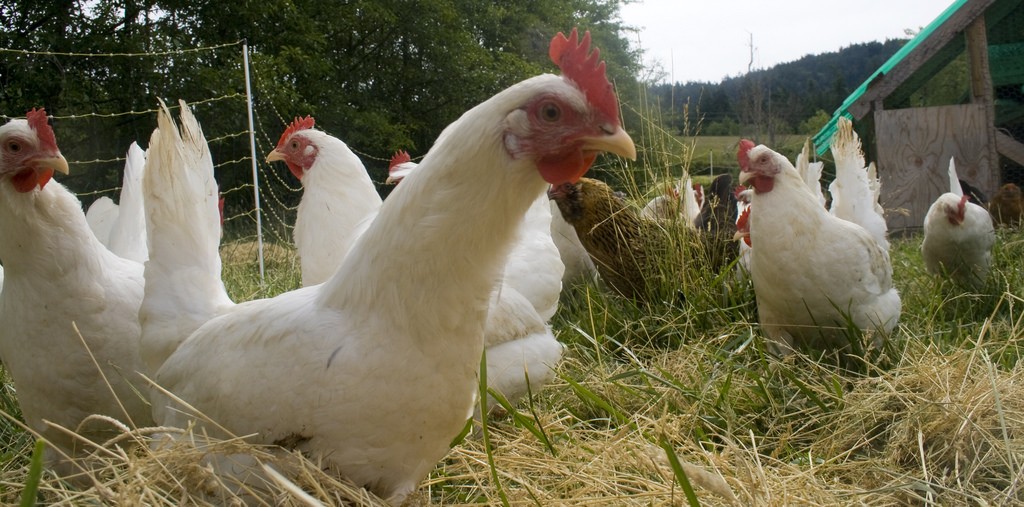Prior to the invention of battery cages, most laying hens were housed in free-range systems. Egg farmers ran small-scale operations and all egg collection was manual.
 woodleywonderworks. (Photographer). (2008, June 23). [Semi] free range chickens [digital image]. Retrieved from https://flic.kr/p/4YitAe
woodleywonderworks. (Photographer). (2008, June 23). [Semi] free range chickens [digital image]. Retrieved from https://flic.kr/p/4YitAe
By the middle of the 20th Century, an intensive mechanization of the industry was witnessed as the battery cage was introduced (de Boer and Cornelissen, 2002). Originally, battery cages were an innocent response to increase hen productivity following breakthroughs in the industry regarding nutrition and breeding (Duncan, 2001). In comparison to keeping birds in floor housing systems, cages allowed for the increase of animal production through mechanization, the permittance of higher stocking densities, and a lower economic costs on a per hen basis. The use of cages also allowed farmers to reduce or avoid outbreaks of cannibalism in their flocks which was more common in larger flocks kept on the floor (Hilbrich, 1985; Hansen, 1993; Abrahamsson and Tauson, 1995). It also prevented the significant and erratic concern of coccidiosis common to flocks kept on the floor (Engström and Schaller, 1993; Morgenstern and Lobsiger, 1993), as well as reducing dust and ammonia levels to benefit the working conditions of farmers (Hauser, 1988; Kangro, 1993).
However, by the mid-1970s, work on alternatives to battery cages began. Perhaps this initiative was led by Swedish scientist Ragnar Tauson who, alongside his colleagues, investigated the source of various basic health problems combatted by laying hens kept in battery cages. Among these health issues identified were significant foot lesions, neck lesions, overgrown claws, and loss of feathers (Fraser, 2008). Tauson’s findings identified the cause of these health effects to be related to the battery cage housing system. The results were very influential with various industry stakeholders including cage manufacturers and those involved in writing regulations and further work on alternative designs was undertaken. Much of this work was funded by the governments of northern European countries (Appleby, 2003).

this is stupid!!!!!!!!!!!!!!!!!!!!!!!!!!!!!!!!!!!!!!!!!!!!!!!!!!!!!!!!!!!!!!!!!!!!!!!!!!!!!!!!!!!!!!!!!!!!!!!!!!!!!!!!!!!!!!!!!!!!!!!!